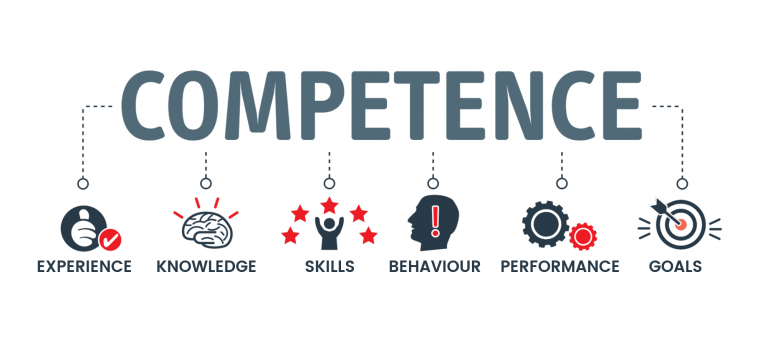Want a Shortcut to Competence? Take the 80/20
September 21, 2023

Competence is one of those words we all think we know but which has more than a few meanings. It may mean the ability to do something. Or the ability to do something successfully. Or the ability to do something efficiently. Or the ability to do something well. Or the ability to do something successfully, efficiently, and well. In business, we sometimes speak of a “core competency,” which is something a company does that differentiates it from the competition, giving it a competitive advantage. In this sense, competence is sometimes defined as the ability to offer products or services that are perceived as valuable, rare, and essentially inimitable.
Developing such super-competent core competencies is obviously a great thing for a business. But doesn’t competence take years, a lifetime, even generations, to develop—at least to the point where it becomes the hallmark of a great brand, a true differentiator in the market?
Well, there is a shortcut …
Perhaps you are already familiar with 80/20, also called the Pareto Principle. If not, let me explain. Vilfredo Pareto (1848-1923) was an economist by profession and an avid gardener by avocation. He loved his pea plants and devoted a great deal of attention to them—observing them closely enough to conclude that just 20 percent of his plants produced 80 percent of his peapods. That conclusion led him to look at the whole world through an 80/20 lens. By doing this, he discovered that for most outcomes, whether in nature or in human endeavor, 80 percent of consequences come from just 20 percent of causes. This sounds like a pretty good deal until you realize it also means that 80 percent of your effort, time, and creative thought is essentially squandered, returning only 20 percent of valuable outcome.
The Pareto Principle is a fact. In business, we can choose to become a victim of the fact that 80 percent of what we do or invest is wasted. Or we can choose to become the beneficiary of the fact and enjoy 80 percent revenue from a 20 percent outlay (overhead) for a marginal return of 60 percent. The difference between suffering and enjoyment, loss and profit, is competence. More precisely, it us competence defined by the ability to determine what combination of customers buying what products will consume just 20 percent of your resources to generate 80 percent of your revenue, resulting in a profit margin of 60 percent.
To hasten the acquisition of competence, save time and effort by outing to work the key data your business produces. Use the numbers to identify your best customers, those who contribute to 80 percent of your revenue. You will discover that these top contributors constitute roughly 20 percent of your total customer base. They are your A customers. The rest of your customers are B customers, who account for about 80 percent of your customer base but generate, roughly, just 20 percent of your revenue. Now, identify your A products, the roughly 20 percent of your SKUs that produce 80 percent of your revenue. The rest are B products. The next step is to segment your customer-product combinations into the following categories:
- A customers who buy A products
- A customers who buy B products
- B customers who buy A products
- B customers who buy B products
Now map each of these onto a quad chart:

Quad 1, at the upper left, is your Fort: A customers buying A products. In this example, it produces 64 percent of your sales and produces about 200 percent of total profit. This quad contains your core competency. Choose to grow it, and you demonstrate competence. In spades.
Quad 2—again, in this example—generates 16 percent of sales and breaks even. It represents a Necessary Evil. You need to do business among this group in order to maintain A customers who buy B products. Preserve the best-performing products in this quad, but price up those that perform less well. Consider ways to simplify the selling process so that significantly fewer resources are devoted to it. Drop the worst losers among these SKUs. After you take these steps, you should be able to move some Quad 2 resources to serve the Fort, Quad 1.
Quad 3, B customers buying A products, can be profitable. Although, in this example, the quad is responsible for just 16 percent of sales, which, however, represent some 20 percent of total profit. Reduce overhead by shifting sales entirely to self-service and online platforms. That is, make sales as touch-free and transactional as possible. But, where appropriate, consider marketing strategies that may convert some B customers to A customers. Again, any Quad 3 resources you have freed up by simplifying sales are now available to grow Quad 1.
Quad 4 are B customers who buy B products. In this example, Quad 3 shows a loss of minus 120 percent of your total profit. Drastically simplify this quad. Drop the worst-selling products, price up those that still have a pulse, and them sell online only. All sales should be zero touch, and you should consider requiring bulk purchases.
Radically simplifying Quad 4 will free up major resources. Indeed, the competent move is to reallocate sales and marketing resources from Quads 2 through 4 and move them to Quad 1. Quad 2 must be served, but not over-served. Business in Quad 3 should be transacted using minimal human resources and with pricing high enough to avoid loss. As for Quad 4, cut the unprofitable products, transact all remaining sales online, create selling strategies that simplify the line, and be thankful for losing your least productive customers.
A simple way to define a company’s core competency is to look at what products and services make it a winner. 80/20 gives you the tools to identify these and the customers who buy them while also showing you how to reallocate more resources to growing the winning categories while simplifying the underperformers. The ability to do this is what competence looks like. Using 80/20, your company can build competence in a lot less than a lifetime.
